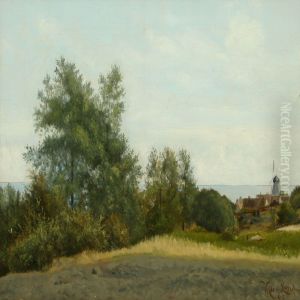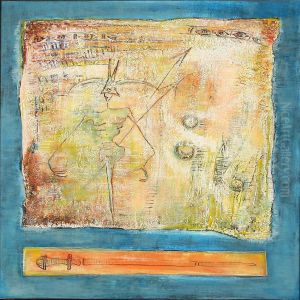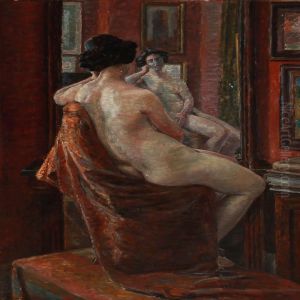Jens Martin Victor Lund Paintings
Jens Martin Victor Lund was a Danish painter, born in 1871 in the town of Nakskov, Denmark. He is not as widely recognized as some of his contemporaries in the art world, and detailed information about his life and works is relatively scarce compared to more prominent artists of his time. Nevertheless, Lund made contributions to Danish art, particularly in the late 19th and early 20th centuries.
Lund's early life and education in the arts are not well-documented, but it is known that he pursued painting as his career. The art scene in Denmark during Lund's time was influenced by the aftermath of the Danish Golden Age, which was characterized by a focus on realism and classical themes. By the time Lund was active, there was a movement toward more modernist approaches, including symbolism and national romanticism, which were reactions to industrialization and urbanization.
Throughout his career, Lund may have created landscapes, portraits, and genre scenes, which were typical subjects for artists of his era. However, specific works or exhibitions attributed to him are not widely cited in art historical literature. His style likely incorporated elements from the prevailing artistic trends of his day, possibly exhibiting the tension between traditional painting techniques and the burgeoning modernist sensibility.
Lund passed away in 1924. The legacy of artists like Jens Martin Victor Lund is often overshadowed by their more famous peers, but their contributions maintain a place in the broader tapestry of a nation's cultural and artistic history. As with many lesser-known artists, renewed scholarly interest or the discovery of previously unknown works can sometimes lead to a reevaluation of their significance in the art historical narrative.


